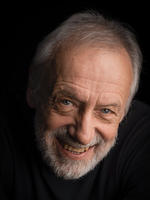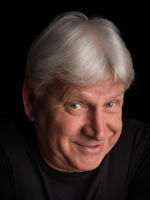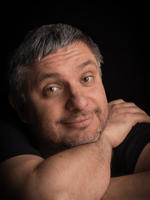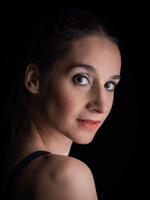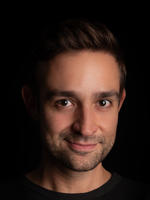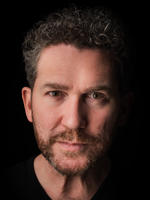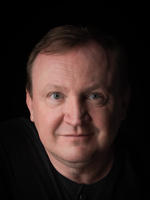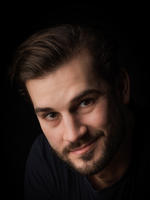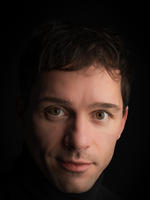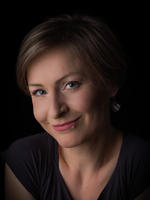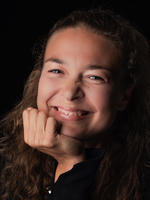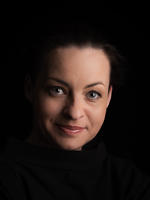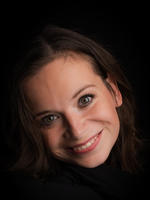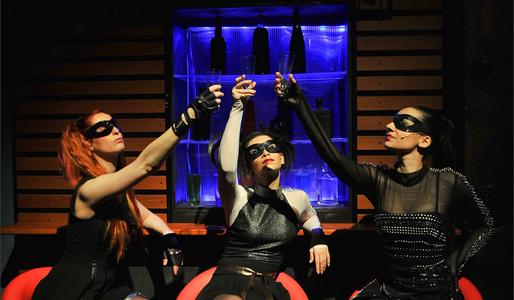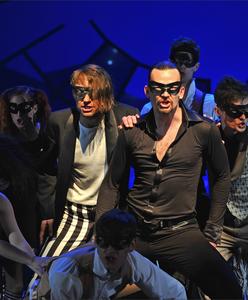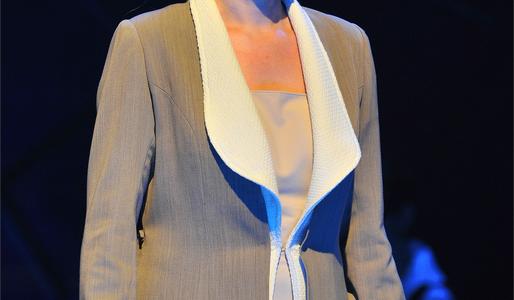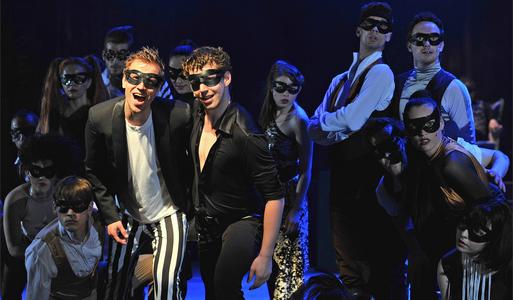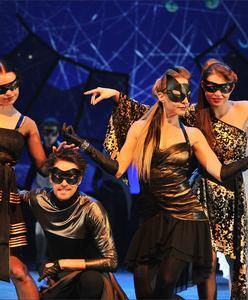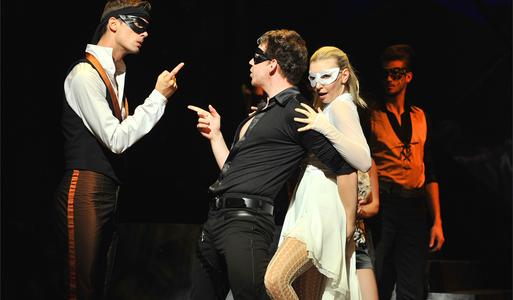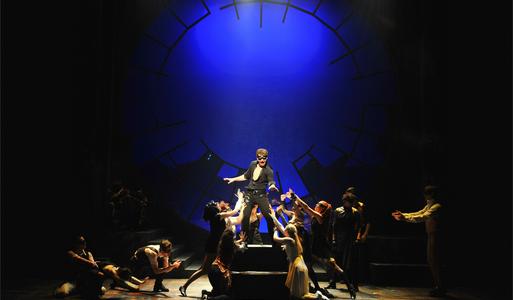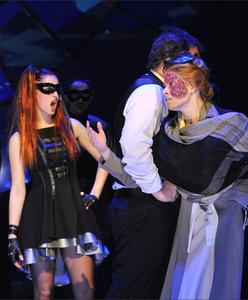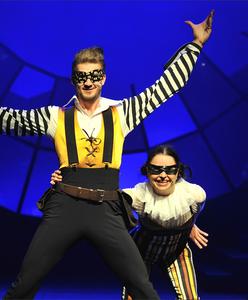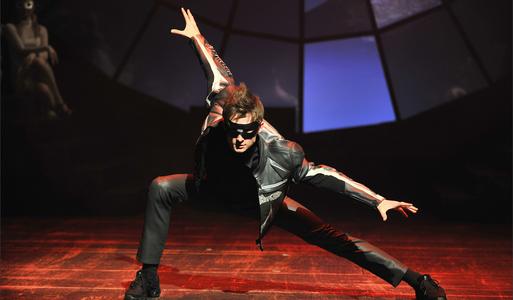the musical
Cats
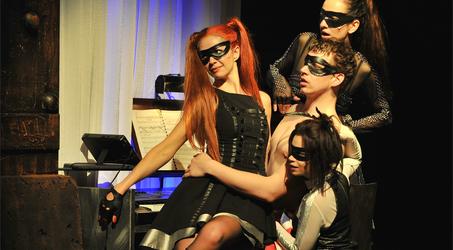
- Genre Musical
- Stage Music Theatre
- Premiere11. May 2013
- Length2:00 hod.
- Number of reprises49
- Final performance1. August 2017
Author
- Andrew Lloyd Webber
- Thomas Stearns Eliot
Directed by
Assistant director
Costumes
Dramaturgist
Stage
Music production
Conductor
Choirmaster
Accompaniment
- Monika Jakubíčková
- Lenka Císařová
- Marek Paĺa
Choreography
Assistant choreography
Český text
- Michael Prostějovský
Produkce
- Zdeněk Helbich
Asistent choreografie stepu
- Jakub Zedníček
Technologická asistence scénografie
- Lubomír Spáčil
Asistentka kostýmní výtvarnice
- Eliška Ondráčková
Light direction
- David Kachlíř
Sound Direction
- Milan Vorlíček
Choreografie stepu
- Denny Ratajský
Grizabella
-
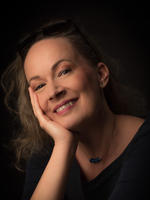 Alena Antalová
Alena Antalová
-
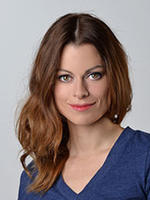 Hana Holišová
Hostující herečka
Hana Holišová
Hostující herečka
Múz - divadelní kocour
Múz zamlada
-
 Lukáš Vlček
Hostující herec
Lukáš Vlček
Hostující herec
-
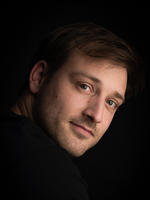 Jonáš Florián
Hostující herec
Jonáš Florián
Hostující herec
Blahobyl Všemocný
Bombalerína
Rozumbrad
Rambajz-tágo
Demetra
-
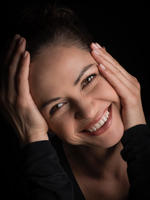 Ivana Vaňková
Ivana Vaňková
-
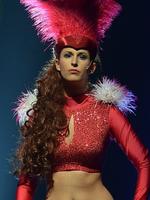 Veronika Bošjaková
Hostující herečka
Veronika Bošjaková
Hostující herečka
Šimbal-klimbal
-
 Jiří Mach
Jiří Mach
-
Laco Hudec Šubrt Hostující herec
Vašnosta Brum
Mungodžery
Tingl-tangl
-
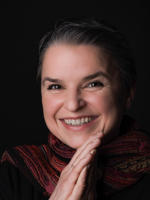 Mária Lalková
Mária Lalková
-
Jana Tesařová Hostující herečka
Moura, kočka domácí
Abraka-máryfuk
-
 Václav Púčik
Hostující herec
Václav Púčik
Hostující herec
-
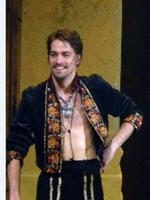 Robert Urban
Hostující herec
Robert Urban
Hostující herec
Dželína
Victoria
-
 Kristýna Przebindová
Kristýna Przebindová
-
 Simona Novotná
Hostující herečka
Simona Novotná
Hostující herečka
McDlouhý dráp, Pucifal
-
Laco Hudec Šubrt Hostující herec
-
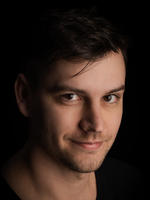 Marek Kolář
Marek Kolář
Jeminé
-
Tereza Martinková Hostující herečka
-
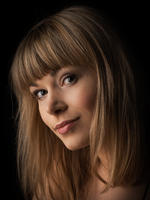 Eliška Hladilová
Eliška Hladilová
Exotica
-
 Gabriela Karmazínová
Gabriela Karmazínová
-
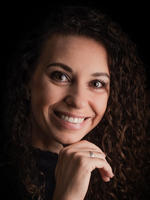 Barbora Musilová
Hostující herečka
Barbora Musilová
Hostující herečka
Apolón, Bengálský mour
Archibaldus
-
Vladimír Strouhal Hostující herec
-
 Ondřej Studénka
Ondřej Studénka
Darmošlap
- Lukáš Vokál Hostující herec
- Dominik Teleky Hostující herec
Elektra
- Tereza Kachlířová Hostující herečka
- Tereza Jirásková Hostující herečka
Alfonso
- Radek Novotný Hostující herec
- David Macháček Hostující herec
Kňoura-mžoura
Baltazar, Siamák
Šílený varhaník
Děti - step
Off - stage (lokajové)
- Dana Puková
- Magda Vitková Hostující herečka
- Monika Havlíčková Hostující herečka
- Martin Křížka Hostující herec
- Radek Láska Hostující herec
- Vít Habernal Hostující herec
- Jan Šild Hostující herec
ALCOHOL, DRUGS AND GLUTTONY AS A WAY TO A NEW LIFE?! BRNO’S CATS ARE ABOUT ALL THIS AND MORE.
Michal Prax 20. June 2013 zdroj www.studentpoint.czThe fact that quality musicals are produced at Brno City Theatre is nothing new. Read about the most famous musical Cats!
Cats done differently – this time they have a human face!
The owners of the authorial rights set only one condition – that Cats should be done differently – and completely so. Moša´s director’s concept is thus based on a strange community of “people” with masks who meet perhaps in a deserted factory or a derelict flat. In this respect, it leaves plenty of room for the audience’s imagination, as do the unbelievably playful and inventive costumes from Andrea Kučerová´s workshop. There are dresses in a wide variety of styles, along with tailcoats and suits – and then there is Munkustrap´s T-shirt with a painted-on tie. The masks, none of which are the same, are a great detail. Scenographer Petr Hloušek had the absolutely great idea of allowing a huge window, which is in fact a peephole into a different dimension, to dominate the stage.
Cats are an example of a two-component musical in which the acting doesn’t have to be of such high quality but great singers and dancers are required. Luckily, there are more than enough performers with these skills at Brno City Theatre, but due to the fact that two musicals were being prepared simultaneously (Cats and The Full Monty!), Brno’s old hands were supplemented with new stars recruited via auditions. As far as the choreography is concerned, this is a real jewel among dance musicals. Hana Kratochvilová and Aneta Majerová have done a really great job, clearly inspired by Bob Fosse´s choreography work. Both solo and group performances are impressive, particularly the dance finale in the form of the cats’ ball, or the prologue song.
Twenty-six great performers!
It would take too much time to evaluate the performance of each of the twenty-six cats and tomcats so I will introduce those you will certainly remember. The first of them is Jennyanydots, a house cat loveably performed by Lenka Janíková. She has a very pleasant vocal timbre and her exercising of small tap-dancing mice with a whip in her hand is impressive and cute. Jennyanydots loves sadomasochist games and dominance. Peter Pecha´s The Rum Tum Tugger is a properly tough tomcat and his “snorting” arrival on the stage will certainly amuse you, as will the text of his song. We mustn´t forget Bustopher Jones, Milan Němec, whose proficient acting takes the role of the boozing, roast mouse-loving feline to a new dimension.
Munkustrap is an important feline star who accompanies the whole story with his witty comments. Ondřej Studénka became the star of the evening. He is self-confident in his role and his singing and dancing are also excellent. He incorporates pleasing details in his performance, such as repeatedly adjusting the knot on his tie even though it is in fact only painted on. The artistic number with the little thieves, Mungojerrie and Rumpleteazer (Kristian Pekar and Mária Lalková), is also certainly worth mentioning. Before the ending itself, Skimbleshanks also introduces himself, played excellently by Jiří Mach. Old Deuteronomy (Petr Gazdík) remains on stage all the time. He is the chief “nutcase” in charge of the whole cat sanatorium who also determines which cat will get the chance to start again.
The second half starts with the performance of the theatre cat Gus, who presents his memories of the past years on the theatre stage. Lukáš Vlček is fantastic as the young Gus in the duet In una tepida note with Jellylorum, Radka Coufalová. Both of them received the greatest applause during the show, and deservedly. Other performances are also excellent, e.g. that of motorbike rider Macavity (Laco Hudec), who can get anywhere with the aid of image projections, or Robert Urban, who plays ballet dancer Mr. Mistoffelees. As far as the singing is concerned, Eliška Skálová is particularly interesting as Jemima.
Will Grizabella regain her old glory?
The story of the Cat of Cats – Grizabella – is a chapter in itself. Her name is a combination of beauty and ugliness. A common interpretation of her character is that of an old cat who gains new hope through death. In Brno, two Thalia Prize winners acted the role - Hana Holišová and Alena Antalová. For the second actress this role marked her return from maternity leave, and her performance of Grizabella is amazing. In Moša´s conception, half of Grizabella’s face has been mutilated. She spends the whole time trying to get into the cats’ ball, and eventually succeeds. The first half ends with everyone repelled by her; she is left alone. However, thanks to Jemima (Eliška Skálová) all of the cats have got to know by the end of the performance that Grizabella is just trying to get back among her “normal” peers. We can discover various parallels, and if we think about the story for a longer time, various relationships can be discovered –such as the connection between one particular white cat and Grizabella. As far as singing is concerned, Antalová completely fulfills what is expected from Grizabella. She has a beautiful, full voice and not a single eye in the auditorium remains dry during Memory.
Even though many people were afraid of Moša´s conception for Cats, Brno is victorious once again, producing an unusually original musical from both the artistic and vocal points of view. Moreover, the production follows a conception which cannot be found anywhere else in the world.
CATS, THE MUSICAL: TAIL-FREE CATS ARE A PURR-FECT HIT FOR BRNO STAGE
Peter Stoličný 15. May 2013 zdroj www.musical-opereta.czThe lifespan of musicals is very hard to predict. Many have entered Broadway or the West End with great pomp and fanfare but ended up forgotten after a dozen reprises. The same fate was also predicted for one quite strange musical show - a mixture of dance performances and songs with at first glance neither dramatic structure nor plot - the famous and celebrated Cats.
It can be said in retrospect that musicals generally stem from one of two origins: either a dramatic tale – West Side Story, Cabaret, Fiddler on the Roof, or something more entertainment-based – Hello, Dolly!, My Fair Lady, and similar productions. There is also another potential source – vaudeville and variety shows, with a sequence of dance and musical numbers “glued together” by a shared idea and being of a clearly entertaining character. Cats is one of those works. Through its regular appearance on the theatre scene, Cats legitimized this entertainment genre which now carries the currently fashionable (and universally-applied) title “musical”. It is something rather novel. Before Cats, no-one had ever attempted such a “jigsaw puzzle” with a distinct lack of much dramatic action. We can only wait with curiosity until somebody successfully attempts to create such a distinctive musical piece again.
Cats in the world
The success of Cats can be said to be colossal – it was performed for a total of 21 years at London’s West End and for 18 years on Broadway in New York. It had 8 950 reprises just in London, and 7 485 performances in New York. It has been performed in 300 cities in 26 countries around the world, and seen by more than 65 million people. It has earned 1.4 billion pounds. It has also been awarded the most prestigious international awards - 2 Grammys and seven of Broadway’s Tony Awards (among others, the Tony for best musical) - awards which mean the same in the world of music and theatre as Oscars in the world of film.
Composer Lloyd Webber and producer Cameron Mackintosh wanted to create a convincing feline world. Therefore, to realize their conception they engaged John Napier, an artist closely cooperating with Trevor Nunn (who was later to become a director and has contributed to successful performances of the Royal Shakespeare Company), and also brought choreographer Gillian Lynne on board. They wanted to dispel any misgivings the audience may have as soon as the music starts and lead viewers to wholly accept their cats as truly real, “living” animals.
The most important reason why Cats has spread around the world so successfully is, paradoxically, the professional difficulty involved in the production. It is a musical in which highly demanding dancing is combined with highly demanding singing. It appears that the actors must have almost supernatural powers in order to draw breath, so great is the tempo of the on-stage action. A mature ensemble of refined singer-dancers is needed for the production of such a work. A Prague theatre was the first in the CzechRepublic to put on the show, approaching this enterprise with great courage. Michael Prostějovský mastered the demanding task of translating the libretto from English into Czech (including the invention of witty Czech names for some of the cats). The Milénium Theatre team was inspired both by the London and New York versions and placed great emphasis on the interaction of the cast with the spectators, so there were cats simply everywhere, both on the stage and in the auditorium. This approach went some way towards compensating for one deficiency, which was that not all the dancers sang, and not all the singers danced. Even with that issue, it was a successful performance and an attractive one for theatregoers. What about the other theatres in the CzechRepublic? None of the ensemble theatres, not even the professional ones, have attempted to produce Cats so far.
Cats in Brno
It is long-awaited, and perhaps the right time has come for Brno’s musical theatre to dare to produce this famous musical on their home stage. One could say that director Stanislav Moša and his team were almost cheeky in the way they didn´t build their mise-en-scene on the attractive and well-tested foundation of communication with spectators and the releasing of ‘real’ cats into the auditorium – and they didn´t force their actors to climb up the scenery, either. In fact, the characters on stage were not even cats - they didn´t wear feline make-up, and they didn´t have any tails… they were merely “like” cats. The producers simply abandoned the tried-and-tested procedures that have made the musical such a guaranteed success, with the exception of the song Memory.
Hana Kratochvilová and Aneta Majerová´s choreography wasn´t copied from any of the famous productions. They designed the cats’ movements “from the ground up”, and their dance creations were different, new and believable. Petr Hloušek´s stage set didn’t seem particularly attractive or over-technical at first glance. Several grey blocks were used in various simple configurations to create enough space for all the characters to dance. The musical production by Vienna’s Caspar Richter guaranteed high quality and real orchestral sound, Richter having previously participated in the greatly successful Vienna production of Cats. He was certainly aided by conductor Dan Kalousek, a central fixture at the theatre, in the “domestication” of the musical aspect of the production for the Brno City Theatre stage. The main emphasis of the mise-en-scenes was placed, apart from on the dancing and singing of THE WHOLE CAST, on the visualization of the cats in the central set of circles on the background of the stage. Simple and witty animations of cats or their eyes, soft nuances in the background, displayed depending on what was taking place on the stage - these effects supported the whole impression from the individual cat’s stories perfectly. Scenographer Petr Hloušek, together with the lighting by David Kachlíř, managed to create such a credible environment that it wasn´t necessary to draw whiskers and eye shadows for the viewer to believe that this really is a story concerning cats. We are simply observing some kind of bizarre society whose members “play at being cats”.
The main asset of the production, however, is the combination of quality singing with quality dance performances. It is hard to understand how one can sing while moving so fast when the sensitive microphones capture every breath. When I think about how sportspeople speak after taking part in an event, for example – it is almost impossible to understand them, they are so out of breath – and suddenly, the pure tones of actors ring out as they sing their demanding parts in the midst of their vigorous on-stage “workout”… It really is almost impossible to understand how they can perform like that. For example, fragile Svetlana Janotová as Bombalurina - how can she find enough breath to go on? How does she have time to sing purely and clearly during those turns that almost belong in the realms of figure skating? Or Aleš Slanina´s tomcat Munkustrap, Dušan Vitázek´s The Rum Tum Tugger or Jiří Mach´s Skimbleshanks. And what about the queen cats - Mária Lalková´s Rumpleteazer, Lenka Janíková´s Jennyanydots, the house cat, Radka Coufalová´s beautiful Jellylorum…and Ladislav Kolář´s wonderfully shabby, elegant Gus, Gabriela Karmazínová´s Exotica… But we would have to name and pay special attention to all twenty-six of the cats, and to some of them twice (once for each alternate actor) in order not to be unjust to any of the soloists. So my apologies to all those I’ve missed – all of the queen cats and tomcats were stunning.
The ‘first lady’ of the theatre, Alena Antalová, also deserves mention. It has been great following her since her arrival at Brno City Theatre in 1994, and commenting on her career as a drama actress, singer and universal artist. After some short breaks, during which she became the mother of many children, her voice has matured and she can compete with any international star with her interpretation of Lloyd Webber´s song Memory (in alternation with Hana Holišová). One more character is particularly worth mentioning - Old Deuteronomy (Petr Gazdík). Thanks to his blond hair arranged into two ear-like pony tails, he was the most tomcattish of tomcats, and his way of walking and intonation clearly conveyed to everyone just what kind of a tomcat he is. It could be seen that Gazdík played this not very major role with great enjoyment. On top of all this, there were the tap-dance variations of the kittens from the Bartůněks´ dance school (the R and P dance and tap dance school) and the wittily conceived organ on the right side of the stage, made operational by Igor Rusinko… No shortage of things to watch and listen to, then.
As a whole, the dance musical made a really good impression. It will probably also be necessary to see the alternate cast in action. Just the fact that the ensemble is able to put this on with alternate actors (and the second cast is definitely going to be just as good as the first – the theatre’s audiences already have experience with this) is great. The Music Theatre at Brno City Theatre is in possession of wonderful mass of human capital, having a large quantity of perfectly prepared individuals that don’t just sing, or act, or dance – they are proficient at all three skills! Theatregoers probably cannot even imagine how much hard work and how many hours of training, rehearsal and practice there are behind this.
I used to be an opera dramaturgist at the New Stage Theatre in Bratislava. I watched the rehearsals of solo parts as well as those of the singing and dancing ensembles. They worked separately on their professions. It was a great effort which the members of the audience do not see, perhaps fortunately, and they have no idea about all the things that are hidden behind every production. Viewers just perceive the highly professional performances and enjoy them.
To sum up: Brno’s Cats must be applauded, and this must be done standing up - which is what happened at the premiere on 11th May 2013.

